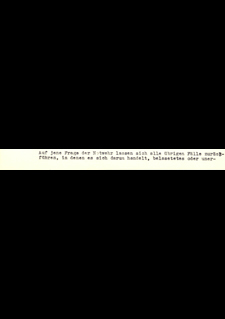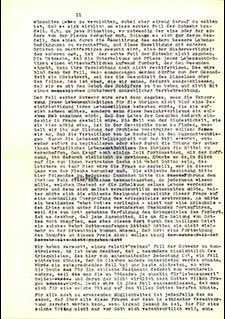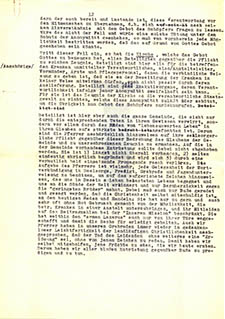Voices against the Crime of Euthanasia
Eugenic considerations (i.e. the application of findings of human genetics to population and health policy with the aim of reducing the rate of genetic disorders and from which racial hygiene was derived) were widespread and widely discussed in the first half of the 20th century.
The ideas about eugenics made popular in Germany after 1920, especially by Karl Binding and Alfred Hoche’s book “Allowing the Destruction of Life Unworthy of Living”, received widespread attention in the Inner Mission. Diaconal institutions addressed this issue at several conferences as of 1930.
The Nazis’ “Law Preventing the Transmission of Hereditary Disease” of July 1933 legalized forced sterilization and established a regulation that became the standard for church institutions, too, and was applied in Protestant nursing facilities. Such support was also bolstered by the expectation of a general sterilization law since before 1933.
Chiefly residents of institutions and homes were affected, who suffered from supposed genetic disorders (“hereditary feeblemindedness”, schizophrenia, etc.), but the law allowed ample latitude. Precise numbers are difficult to ascertain. Michael Burleigh estimates that a total of 400,000 were victims of the sterilization law.
Nazi racial hygiene served to justify the mass murder of people defined as “life unworthy of living”. Once war had broken out, this law and the murderous radicalization of the Nazis’ racial policy led to the systematic killing of people with disabilities. The central document, Hitler’s memorandum recommending and authorizing “mercy killing”, dated September 1, 1939, was a private memorandum, which established law, however.
It commenced the systematic killing of people with mental illnesses and physical disabilities, which was called the “T4 Program” after the department in charge on Tiergartenstrasse 4. Some 70,000 residents of institutions had been killed by August of 1941. The killing continued even after the “program” had been officially stopped. The number of people killed likely nearly doubled by the end of the war.
The Nazis put a stop to the program of killing for several reasons. The famous sermons of Clemens August Graf von Galen, Bishop of Münster, which were published repeatedly, were particularly instrumental.
Protestants also spoke out against the injustice:
Judge Lothar Kreyssig (1898–1986), a regular judge who opposed the euthanasia killings, wrote to Nazi Minister of Justice Gürtner in 1940 that, Justice is that which benefits the people. In the name of this terrible doctrine still uncontested by all of the custodians of the law in Germany, entire domains of communal life are outside of the law, e.g. the concentration camps completely, now sanatoriums and homes completely as well.
Ernst Wilm, a pastor in Westphalia, was sent to a concentration camp in the winter of 1940-41 for having delivered a talk on “Killing the ‘Incurably’ Ill“.
The theologian Hermann Diem (1900–1975), a member of the Confessing Church, wrote a detailed theological opinion in 1940, which he sent to Theophil Wurm, Bishop of Württemberg. In it, he very clearly stated his opposition to the program of killing on theological grounds (see source).
The Catholic bishops’ pastoral letter of June 26, 1941 was in a similar vein with clear words: There are sacred duties from which no one can release us and which we must fulfill, even if it costs us life itself: A human being may never, under any circumstance, blaspheme God, one may never hate fellow humans, one may never kill an innocent person outside of war and justified self-defense, one may never commit adultery, never lie. One may never deny one’s faith or allow oneself to be induced to leave the church through coercion or promise.
Best known is certainly the memorandum of July of 1940 from Paul Gerhard Braune (1887–1954) a pastor and director of the home in Lobetal. In it, Braune had gathered all available information and delivered it to government authorities. The Gestapo arrested Braune in August of 1940. After his release from custody at the end of October of 1940, he secretly resumed his fight against the killing.
Source / title
- © Landeskirchliches Archiv Stuttgart, D1/113



